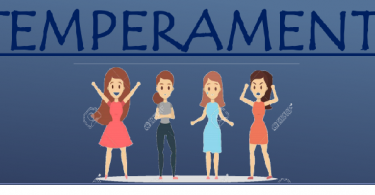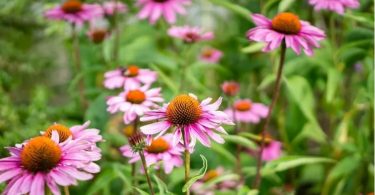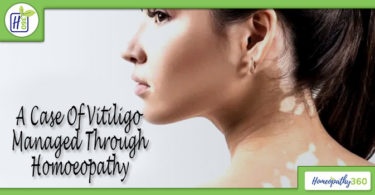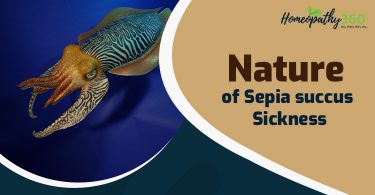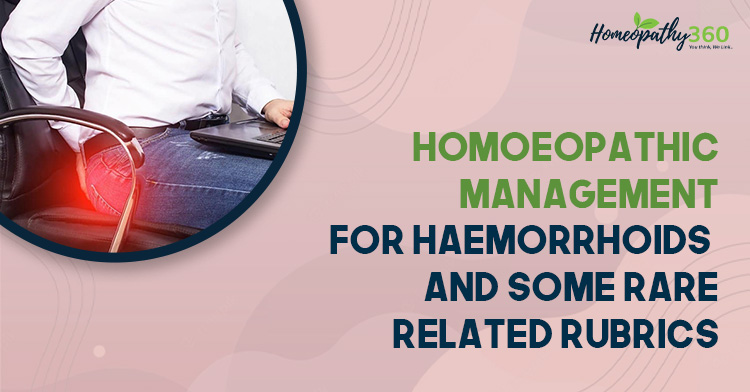
ABSTRACT – The normal anal cushions’ symptomatic expansion and distal displacement are known as haemorrhoids. Hemorrhoids’ most typical symptom is rectal bleeding that occurs during bowel movements. Hemorrhoids are most commonly identified by the abnormal dilatation and distortion of the vascular channel as well as damaging alterations in the supportive connective tissue within the anal cushion. A potential target for medical treatment appears to be the dysregulation of vascular tone and vascular hyperplasia, which may be crucial in the development of haemorrhoids. Hemorrhoids are typically treated conservatively with a variety of techniques, including dietary changes, fibre supplements, suppository-delivered anti-inflammatory medications, and administration of venotonic drugs. Sclerotherapy and, preferably, rubber band ligation are non-operative methods. When non-operative methods have failed or complications have occurred, surgery is indicated. Hemorrhoidectomy and stapled hemorrhoidopexy are two surgical methods for treating haemorrhoids, but postoperative pain is always present. Some surgical procedures, such those for anal stricture and incontinence, have a significant risk of causing morbidity. Each treatment’s applications and results are thoroughly explored.
- KEYWORDS- Haemorrhoids, Pathophysiology, Homoeopathic medicine, Repertory
INTRODUCTION: [1, 2]
Hemorrhoids (HEM-uh-roids), also called piles, are swollen veins in your anus and lower rectum, similar to varicose veins. Hemorrhoids can develop inside the rectum or under the skin around the anus.
Nearly three out of four adults will have hemorrhoids from time to time. AGE/ SEX PREVALENCE Hemorrhoids have a number of causes, but often the cause is unknown.
The signs and symptoms of hemorrhoids depend on their type presence. Internal hemorrhoids often result in painless, bright red rectal bleeding while defecation . External hemorrhoids often result in pain and swelling in the area of the anus. If bleeding occurs it is usually darker.
CAUSES: [3]
- The exact cause of symptomatic hemorrhoids is unknown. A number of factors are believed to play a role, including:
- Irregular bowel habits (constipation or diarrhea),
- lack of exercise, low-fiber diets,
- Increased intra-abdominal pressure (prolonged straining, ascites, an intra-abdominal mass,etc),
- genetics,
- an absence of valves within the hemorrhoidal veins,
- aging.
- obesity,
- prolonged sitting,
- pelvic floor dysfunction.
- The birth of the baby also leads to increased intra-abdominal pressures.
Pathophysiology- When the tissues that support the anal cushions break down or deteriorate, haemorrhoids form. Therefore, the pathological name for the aberrant downward displacement of the anal cushions that results in venous dilatation is haemorrhoids. Right anterior, right posterior, and left lateral areas of the anal canal typically contain three major anal cushions, with varying numbers of minor cushions positioned in between. Hemorrhoids patients’ anal cushions exhibit significant pathological changes. These alterations include vascular thrombosis, abnormal venous dilatation, a degenerative process in the collagen fibres and fibroelastic tissues, and distortion and rupture of the anal subepithelial muscle. This is known as the theory of sliding anal canal lining which is widely accepted.
TYPES OF HAEMORRHOIDS : [3]
- Internal Haemorrhoids– hemorrhoids present above the pectinate line.
- External Haemorrhoids- hemorrhoids present below the pectinate line.
GRADES OF HAEMORRHOIDS: [4]
Haemorrhoids can be of 4 grades, according to their condition of prolapse.
- Grade I: No prolapse, just prominent blood vessels
- Grade II: Prolapse upon bearing down, but spontaneous reduction
- Grade III: Prolapse upon bearing down requiring manual reduction
- Grade IV: Prolapse with inability to be manually reduced.
MANAGEMENT: [3]
- Increase intake of foods rich in dietary fiber,
- Increase intake of oral fluids to maintain hydration,
- Warm sitz baths, and rest.
- Decreasing time spent on the toilet and
- Not to strain at stool.
- Daily brisk walk of 45 minutes, is also necessary.
- Decrease weight.
TREATMENT: [3]
- Analgesic agent such as lidocaine, and a vasoconstrictor such as epinephrine.
- Steroid-containing agents
- topical agents and suppositories
HOMOEOPATHIC MANAGEMENT OF SOME SPECIFIC CONDITIONS, RELATED TO HAEMORRHOIDS ACCORDING TO J.T. KENT : [5]
RECTUM– HAEMORRHOIDS– beer agg : Aloe, bry, fer, nux-v, rhus-t, sulph.
RECTUM– HAEMORRHOIDS– children, in : Mur-ac.
RECTUM– HAEMORRHOIDS– drunkards, in : Ars., carb-v., Nux-v., sul-ac.
RECTUM– HAEMORRHOIDS– excitement : Arg-n., gels., hyos., nat-c., nux-v., sumb.
RECTUM– HAEMORRHOIDS– flatus, protrude when passing : Bar-c., phos.
RECTUM– HAEMORRHOIDS– menses, before : Cocc., phos., puls.
during, agg. : Aloe., am-c., calc., carb-s.,
carb-v., cocc., coll., graph.,
ign., lach., lyss., phos.,
puls., sulph.
after, agg. : Cocc.
suppressed, during : Phos., sulph.
RECTUM– HAEMORRHOIDS– mental exertion : Caust., nat-c.
RECTUM– HAEMORRHOIDS– mercury, after abuse of : Hep., sul-ac.
RECTUM– HAEMORRHOIDS– milk agg. : Sep.
RECTUM– HAEMORRHOIDS– parturition agg. : Ign., Kali-c., lil-t., mur-ac., podo., puls., sep., sulph.
RECTUM– HAEMORRHOIDS– pregnancy, during : Æsc., am-m., ant-c., caps., coll., lach., lyc., nat-m., nux-v., sep., sulph.
RECTUM– HAEMORRHOIDS– rheumatism abates, after : Abrot.
RECTUM– HAEMORRHOIDS– standing agg. : Æsc., am-c., caust., sulph.
RECTUM–HAEMORRHOIDS-stool,preventing: Æsc., caust., lach., pæon., sul-ac., thu.
protrude during : Alumn., am-c., bar-c.,
Calc-p., calc., fl-ac., kali-bi.,
kali-c., lach., mur-ac.,
nit-ac., ph-ac., phos.,
plat., Rat., rhus-t., sil.
RECTUM– HAEMORRHOIDS– thinking of them agg. : Caust.
RECTUM– HAEMORRHOIDS- touch agg. : Abrot., Bell., berb., calc., carb-an., carb-s., Caust., graph., hep., kali-c., lil-t., Lues., lyc., merc., Mur-ac., nit-ac., nux-v., phos., Rat., sep., sil., sul-ac., Sulph., Thu.
RECTUM– HAEMORRHOIDS– urination, protrude during : Aloe., Bar-c., bar-m., canth., kali-c., merc., mur-ac., nit-ac.
after agg. : Merc.
RECTUM– HAEMORRHOIDS– warm weather agg. : Nit-ac.
RECTUM– HAEMORRHOIDS– wiping after stool agg.: Æsc., Graph., Mur-ac., Pæon., puls., sulph.
Homoeopathic Management8,9,10–
- AESCULUS HIPPOCASTANUM- Dry, aching. Feels full of small sticks. Anus raw, sore. Much pain after stool, with prolapse. Hæmorrhoids, with sharp shooting pains up the back; blind and bleeding; worse during climacteric. Large, hard, dry stools. Mucous membrane seems swollen and obstructs the passage.Burning in anus with chills up and down back.
- ALOE SOCOTRINA- Constant bearing down in rectum; bleeding, sore, and hot; relieved by cold water. Feeling of weakness and loss of power of sphincter ani. Jelly-like stools, with soreness in rectum after stool. A lot of mucus, with pain in rectum after stool. Hæmorrhoids protrude like grapes; very sore and tender; better cold water application. Burning in anus and rectum.
- AMMONIUM CARBONICUM- Stools difficult, hard, and knotty. Bleeding piles; worse during menses. Itching at anus. Protruding piles, worse after stool, better lying down.
- CAPSICUM ANNUUM- drawing pain in back after stool. Thirsty after stool, with shivering. Bleeding piles, with soreness of anus. Stinging pain during stool.
- COLLINSONIA CANADENSIS- Most obstinate constipation, with protruding hæmorrhoids. Aching in anus and hypogastrium. Painfull bleeding piles.
- HAMAMELIS VIRGINIANA- Anus feels sore and raw. Hæmorrhoids, bleeding profusely, with soreness. Dysentery. Pulsation in rectum.
- KALIUM CARBONICUM- Large, difficult stools, with stitching pain an hour before. Hćmorrhoids, large, swollen, painful. Itching, ulcerated pimples around anus. Pain in hćmorrhoids when coughing. Burning in rectum and anus.
- NITRICUM ACIDUM- Violent cutting pains after stools, lasting for hours (Ratanh). Hæmorrhages from bowels, profuse, bright. Prolapsus ani. Hæmorrhoids bleed easily.
- PHOSPHORUS- Great weakness after stool. Discharge of blood from rectum, during stool. White, hard stools. Bleeding hćmorrhoids.
- RATANHIA PERUVIANA- Protrusion of hćmorrhoids. Fissures of anus, with great constriction, burning like fire, as do the hćmorrhoids.
- SULPHUR- Redness around the anus, with itching. Morning diarrhśa, painless, drives out of bed, with prolapsus recti. Hćmorrhoids, oozing and belching.
- VERBASCUM THAPSUS- Many movements a day, with twisting about navel. Hćmorrhoids, with obstructed, hardened stool. Inflamed and painful piles.
- GRAPHITES– Constipation; large, difficult, knotty stools united by mucus threads. Burning hćmorrhoids. Smarting, sore anus, itching. Lump stool, conjoined with threads of mucus.
- ARSENICUM ALBUM- Hćmorrhoids burn like fire; relieved by heat. Skin excoriated about anus.
- ANACARDIUM ORIENTALE- Itching at anus; moisture from rectum. Hćmorrhage during stool. Painful hćmorrhoids.
- CARBO VEGETABILIS- Frequent, involuntary cadaverous-smelling stools, followed by burning. White hćmorrhoids; excoriation of anus. Bluish, burning piles, pain after stool.
- CALCAREA FLUORICA- Bleeding hćmorrhoids. Itching of anus as from pin-worms. Internal or blind piles frequently, with pain in back, generally far down on the sacrum, and constipation.
Discussion And Conclusion- Dilated veins in the anus are referred to as haemorrhoids. A low fibre diet, constipation, and irregular bowel habits all play a significant role in the pathogenesis of haemorrhoids. The primary symptoms are anal pain, irritation, and bleeding, which cause the mucosa to slide and shear while urinating. Lack of knowledge and disregard for the disease’s requirements may exacerbate the condition and raise the likelihood of relapse. This page emphasises the disease’s prevalence along with the diagnosis and treatment plan, which could be helpful in raising awareness and preventing relapse.
Homoeopathic medication are the one of the most effective treatment for the both men and women suffering from haemorrhoids. Other treatment like surgery can be avoided by using homoeopathic medicine. Haemorrhoids can be healed if continues homoeopathic dosages are administered and the recovery is monitored.
REFERENCES
- Hemorrhoids. Mayocinic. [Internet]. Available from: https://www.mayoclinic.org/diseasesconditions/hemorrhoids/symptoms-causes/syc-20360268
- Hemorrhoid. Wikipedia. [Internet]. [edited 20 february 2021] Availablefrom:https://en.wikipedia.org/wiki/Hemorrhoid#:~:text=Hemorrhoids%2C%20also%20spelled%20haemorrhoids%2C%20are,to%20refer%20to%20the%20disease.
- Beck, David E. (2011). The ASCRS textbook of colon and rectal surgery (2nd ed.). New York: Springer. p. 175. ISBN 978-1-4419-1581-8. Archived from the original on 2014-12-30.
- Dayton, senior editor, Peter F. Lawrence; editors, Richard Bell, Merril T. (2006). Essentials of general surgery (4th ed.). Philadelphia; Baltimore: Williams & Wilkins. p. 329. ISBN 978-0-7817-5003-5. Archived from the original on 2017-09-08.
- Kent J.T. Rectum. Repertory of the homoeopathic material medica. Reprint ed. Noida, India: B.Jain Publishers.2017;619-621.
- Lohsiriwat V. Hemorrhoids: from basic pathophysiology to clinical management. World J Gastroenterol. 2012 May 7;18(17):2009-17. doi: 10.3748/wjg.v18.i17.2009. PMID: 22563187; PMCID: PMC3342598.
- Thomson WH. The nature and cause of haemorrhoids. Proc R Soc Med. 1975;68:574–575. [PMC free article] [PubMed] [Google Scholar] [Ref list]
- Boericke W. Boericke’s New Manual of Homoeopathic Materia Medica with Repertory. 9th Edition. New Delhi: B Jain Publishers Pvt Ltd; 2011.
- Dr S.R. Phatak, Materia Medica of Homeopathic Medicines . Second Revised& Enlarged Edition . New Delhi: B Jain Publishers Pvt Ltd; 2005.
- Timothy F. Allen; The Encyclopedia of Pure Materia Medica ; volume 1 to 10 1st edition; 1874-79New York ;Boericke& Tafel
About Author:
Dr. Ashok Yadav1, Dr. Sakshi Sharma2, Dr. Apoorva Saxsena3
1Head of Department, Department of Practice Of Medicine, Dr. M.P.K. Homoeopathic Medical College, Hospital and Research Centre, Saipura, Jaipur.
2MD scholar, Department of Practice Of Medicine, Dr. MPK Homoeopathic Medical College Hospital and Research Centre (Under Homoeopathy University), Saipura, Sanganer, Jaipur
3MD scholar, Department of Repertory, Dr. MPK Homoeopathic Medical College Hospital and Research Centre (Under Homoeopathy University), Saipura, Sanganer, Jaipur


